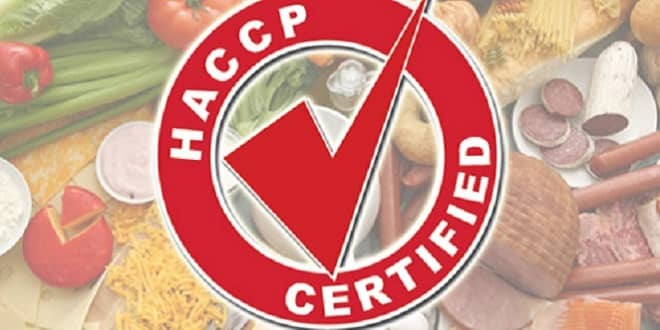GMP / HACCP
Training Manual
-
Our Company
-
GMP Implementation and Management
-
What is a GMP/HACCP Program?
-
Good manufacturing programs/Hazard Analysis Critical Control Point
– A system which identifies specific hazards and preventative measures for their control
Programs to manage food safety.
-
An internationally recognised program (Codex).
-
A program designed to be specific to a food facility.
-
A program that requires corporate commitment.
-
A program that requires the commitment of each employee.
-
HACCP Program
-
A HACCP program has three components
1.GMP (Prerequisite Programs)
2.HACCP Plan
3.Verification Program
-
GMP Program
-
GMPS vs CCPs
-
GMPs (Prerequisite Programs)
control the environment that a food is produced in and the practices of the employees
-
CCP (Critical Control Point)
a point or process (manufacturing control) in the operation which is designed to control a specific hazard.
-
Hope
-
All
-
Companies
-
Control
-
Products & Processes
-
Origin of the HACCP Concept
-
The concept of a HACCP Program was originally developed and implemented in the 1960’s by the Pillsbury Company.
-
It was developed to ensure safe foods for NASA and the Apollo program by controlling the environment and the processing parameters.
-
What are the Benefits of GMPs & HACCP ?
-
A formalized safety management system based on good science.
-
A higher level of understanding and participation of employees.
-
Demonstrates due diligence and defines responsibilities.
-
Builds client and consumer confidence.
-
What does
GMP/HACCP do ?
-
GMP/HACCP provides an auditable
system for food safety.
-
GMP/HACCP requires a plan which
dictates how a company manages food safety.
-
GMP/HACCP requires companies to properly develop prerequisite programs (GMP) which detail how hazards may be controlled.
-
GMP/HACCP requires critical control points to be established to control hazards not controlled by a prerequisite program.
-
GMP/HACCP
and the Employee
-
GMP/HACCP will require the employee to understand the aspects of food safety in relationship to the tasks he or she performs.
-
GMP/HACCP puts the responsibility of controlling hazards on the person performing the task.
-
GMP/HACCP will prompt the employee to take corrective action before a deviation becomes a problem.
-
GMP/HACCP requires employee commitment to perform their tasks as trained.
-
Food Safety
-
Food safety cannot be achieved by government regulations and inspection, it can only be achieved by careful handling of foods at all points in the food chain, from production to consumption.
-
Food handlers must understand their role and accept the responsibility of their actions. It is the food handlers responsibility to provide safe, wholesome foods to the customer.
-
It is also the food handlers responsibility to maintain the quality and reputation of their companies products and or services.
-
Food Protection
-
Proper controls are necessary to prevent contamination of food which may result in a potential health hazard.
-
Control of critical points in the handling sequence of food is essential for the protection of food.
-
Control can be achieved through corporate commitment and the planning and implementation of a sound, effective GMP/HACCP program.
-
Characteristics of Food
-
Internal characteristics
-
available nutrients
-
available water
-
pH (acidity or alkalinity)
-
physical structure
-
External characteristics
-
temperature
-
atmosphere (presence or absence of O2)
-
packaging
-
Temperature and Time
-
Time and Temperature are the most important factors in the spoilage and safety of food.
-
Temperature affects the rate at which microorganisms grow.
-
Food handlers control temperature
…

